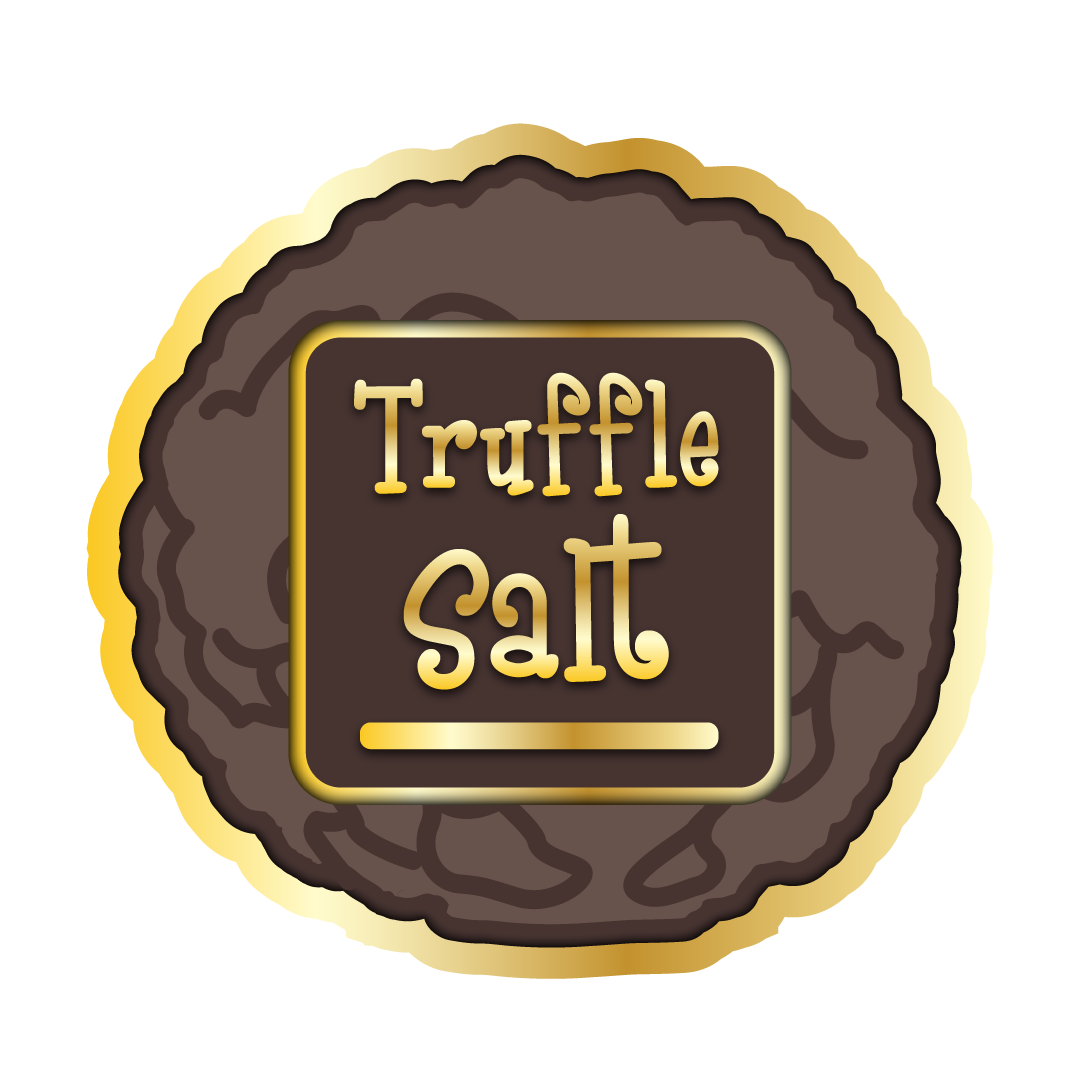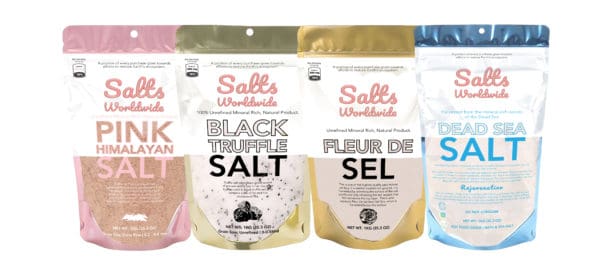Himalayan Sea Salt is the latest trend in the culinary world, and the benefits of using it are many. There are also some common misconceptions about it, such as whether it is good for cooking or not. Here are some tips and advice to help you make an informed decision.
Pink vs black
Both pink and black Himalayan sea salt have the same composition but have a distinct difference in uses. For starters, both are naturally sourced and both have different production processes.
Pink salt is produced by mass evaporation of saltwater. Activated charcoal is then added to the salt, creating a homogeneous mixture. The resulting salt is then ground into coarse grains. It is said to have 84 trace minerals.
Black salt, on the other hand, is naturally sourced and it contains fewer sodium than table salt. This makes it more suitable for dishes with a pungent flavor. However, it can be used in recipes that call for conventional table salt.
In addition to being less expensive, black salt is also said to be better for skin. It is said to have antioxidant properties, which fight free radicals in the body.
Black salt can be found in most countries. It is typically sold in India, although it is not as common as pink salt.
Black salt is also used in ayurvedic medicine. It is often used as a digestive aid. It has been known to treat constipation and heartburn. It is also said to be helpful in treating bloating and stomach cramps.
Some people prefer to use black salt in place of table salt. While both salts contain sodium chloride, black salt is a little less sodium and contains more of the mineral calcium.
Another common usage for black salt is in vegan dishes. Because it has an egg-like flavor, many vegans enjoy it. However, it is still best to use it sparingly. If you eat too much salt, your kidneys may be damaged, raising your risk of chronic kidney disease.
Black salt is a very popular ingredient in Indian cuisine. It goes well with classic Indian spices and dishes. Moreover, it is often used in namkeens. It is even used in chaat dishes.
Himalayan salt is a salt that is preserved with tree bark and spices. It has a faint sulfurous aroma, like that of eggs. A small amount of salt can be used to season vegetables and fried foods.
Iodine content
Himalayan sea salt contains many beneficial substances. Some of these include magnesium, calcium, and copper. Compared to table salt, Himalayan salt has a greater mineral diversity. Moreover, it is less artificial.
Iodine is another important nutrient that is required by the thyroid to regulate various processes in the body. It is also involved in the production of hormones and controls metabolism. The recommended daily intake of iodine for adults is 150 mcg, and for pregnant women and lactating women it increases to 220 mcg.
The most common source of iodine is from seafood. However, iodine can also be obtained from other food sources. For example, eggs and dairy products contain iodine. In addition, ocean vegetables such as sea cucumbers contain iodine.
Unlike table salt, which is highly processed and contains added iodine, Himalayan sea salt is naturally mined. Typically, it is mined by hand, and it contains a large number of trace minerals.
Pink Himalayan salt is commonly sold in bath salts and other forms. It is typically dark orangey-red in color and can range from a few shades to a light pink. Among its many uses, it is often used as a facial mask, to mop up excess oil, and to lock in moisture.
There is some controversy surrounding the iodine content of Himalayan salt. Although it is claimed to be a rich source of iodine, it is actually relatively low. As a result, the best way to get the iodine you need is from other sources. Specifically, eggs, seafood, and dairy products are some of the best sources of iodine.
However, there is one form of iodine that is not easily absorbed by the human body: iodized salt. Most commercial table salts are bleached, which removes the minerals they contain. Adding iodine depletes the natural iodine in the body, making it harder for the body to absorb and use the iodine. This is why it is best to consume it in moderation.
According to a recent study, pink Himalayan salt has a positive impact on the body’s ability to balance pH levels. It was found to be more effective than sea salt in reducing oxidative stress.
Health benefits
If you are looking for a healthier alternative to table salt, you may want to consider pink Himalayan sea salt. This salt offers several health benefits that you may not have thought of. It is rich in magnesium, potassium, and calcium.
Pink Himalayan sea salt is naturally high in minerals and sodium. These are beneficial elements that are essential for proper digestion and overall health.
Salt is a vital component of your diet. It regulates blood pressure and helps your body to absorb water. In addition, it works as an antimicrobial agent. Using salt therapy can help you ease a sore throat, cough, and other respiratory problems. Also, it can be used as a natural treatment for seasonal allergies.
Himalayan sea salt is said to contain a variety of electrolytes, such as iodine, which is essential for a healthy thyroid gland. Iodine deficiency can cause fatigue, weight gain, and other thyroid-related symptoms.
Salt can also be helpful in detoxifying your body. If you have a kidney or liver problem, you should limit your intake of salt. Excessive salt can also lead to high blood pressure, which is an important factor in cardiovascular disease.
While table salt is heavily refined, Himalayan sea salt is not. The mineral content of the salt is much higher, and it is considered to be more healthy than table salt.
Although pink Himalayan salt has some great health benefits, it is not a magic bullet. If you are unsure if you can safely add it to your diet, you should always consult a doctor.
Himalayan pink salt is best consumed in moderation. A half-teaspoon of the salt mixed in warm water is a good way to get the most out of it.
If you suffer from a cough, cold, or asthma, you can also use saltwater as a gargle. The salt will help loosen mucus, kill bacteria, and soothe your symptoms. You can even purchase a salt inhaler.
Pink Himalayan sea salt can be a good way to enhance the flavor of food. It has been credited with helping people suffering from sleep disorders.
Is it good for cooking?
Himalayan sea salt is a wonderful addition to your cooking, whether you’re making a traditional dish or a dessert. This salt is naturally mined in the mountains of the Himalayas. It has a pink color and can be used for many different types of recipes.
There are two kinds of Himalayan sea salt. One is the coarse salt, while the other is the fine salt. Fine salt is best for baking. Besides, the fine salt will be more evenly distributed through your ingredients, and you will get more even results.
If you want to try cooking with Himalayan sea salt, you can either buy a salt block or use a salt mill. The salt blocks will keep the heat for a longer period of time. However, they can crack if you are not careful. You should always handle them with a pair of high-heat resistant gloves.
Himalayan salt contains beneficial minerals such as calcium, iron, and potassium. These are essential for maintaining a healthy diet. Moreover, the salt helps with digestion and metabolism.
Pink Himalayan salt is also known to contain more calcium and iron than regular table salt. These minerals help to build and repair tissues and bones. They also play an important role in muscle contraction.
Another health benefit of Himalayan salt is the presence of an enzyme called amylase. This enzyme aids in breaking down carbohydrates and proteins. Hence, it has been a popular ingredient for meat preservation in the Himalayas.
Himalayan salt also stimulates hydrochloric acid and activates salivary glands. This helps break down protein, and helps absorb nutrients from food.
Some of the most common uses for pink Himalayan salt are bath salts and marinades. This salt has an appealing pink color and a taste that is milder than normal table salt.
While it is not recommended to eat too much of it, it is often used as a condiment in cooking. In fact, cooking with this salt is a fairly new trend, and it is becoming more popular.
For many people, Himalayan salt is a healthier alternative to processed salt. Because it contains fewer additives, it is a good choice if you don’t mind the cost.


Recent Comments